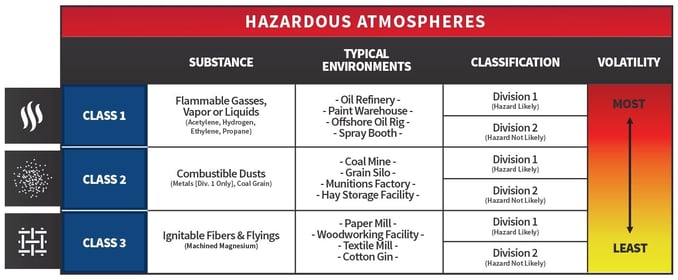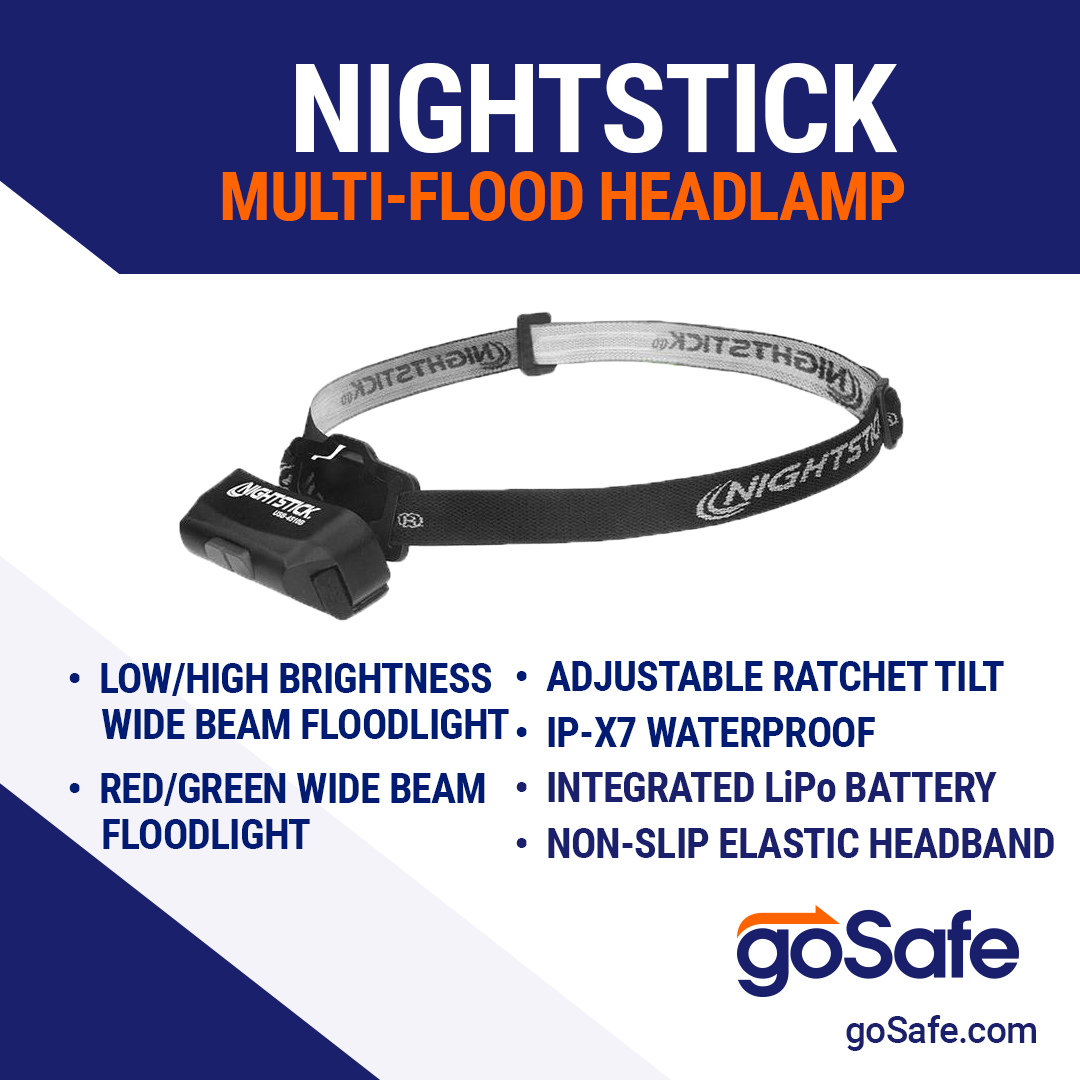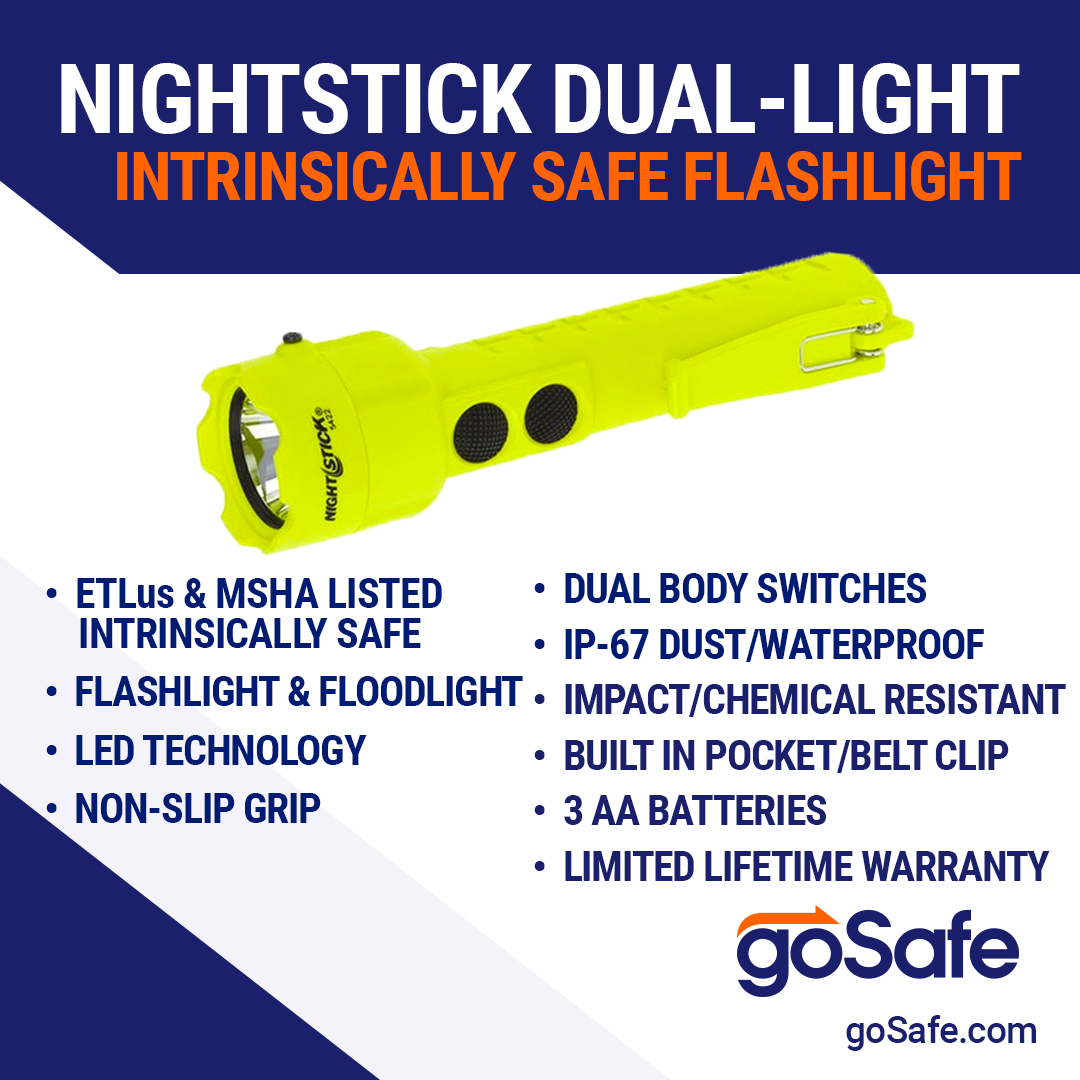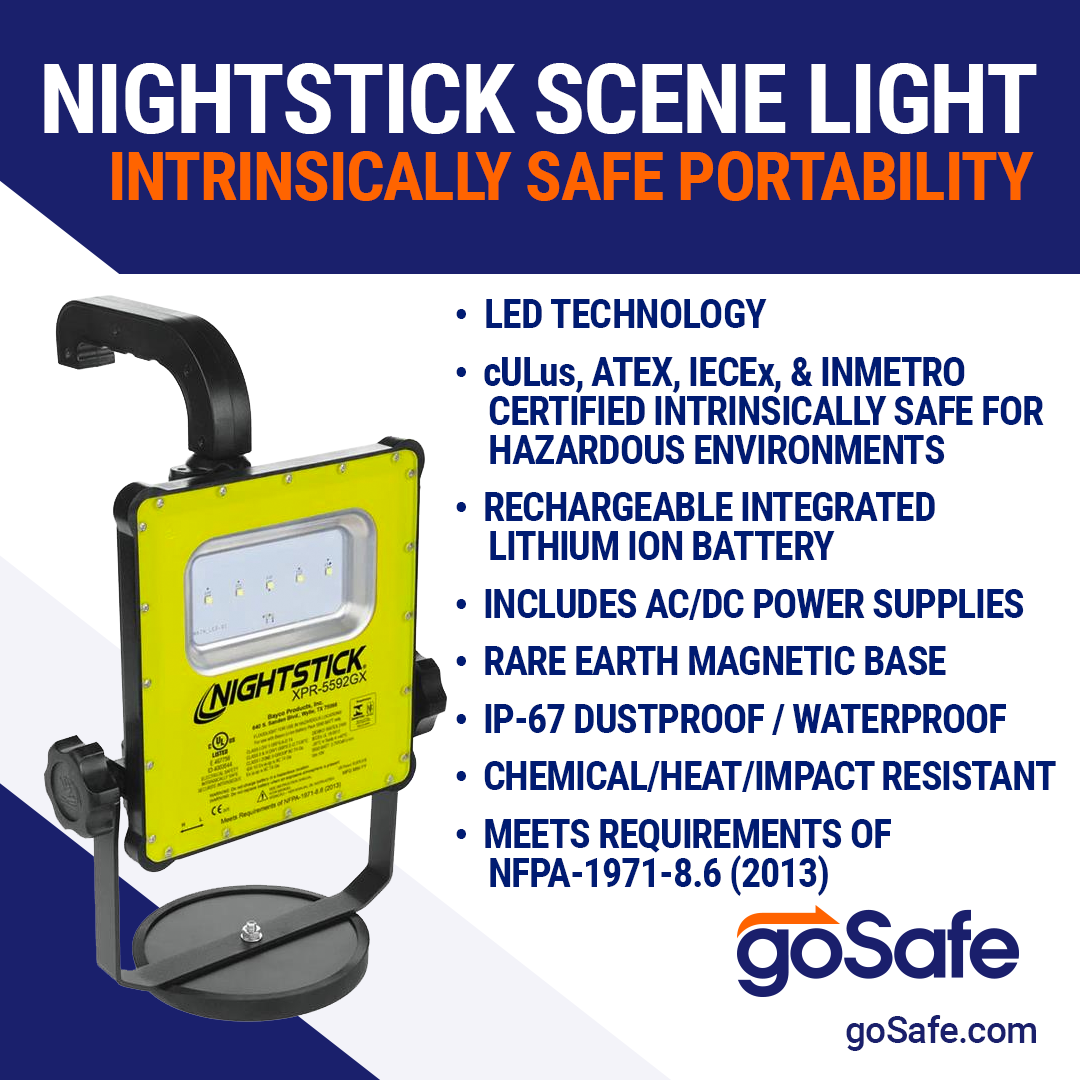'Explosion Proof' and 'Intrinsically Safe' are the two most common, well known classes of lighting based on two different ways of preventing explosions in an atmosphere containing hazardous vapor. This includes handheld, portable, and wearable lighting, as well as complete facility lighting systems. The difference between the two classes of lighting is significant, and is based on the premise of Containment vs Prevention.
The Containment (Explosion Proof) method allows the ignition to happen, but keeps it from spreading to an open atmosphere where it becomes dangerous.
The Prevention (Intrinsically Safe) method controls the source of ignition, and never allows for enough energy to make ignition possible.
Bottom Line: The safest, most representative method of prevention is using Intrinsically Safe devices.
Applicable Standards
Intrinsically Safe (IS) Standard
There are international safety standards that certify light systems as Intrinsically Safe:- FM Approvals, the independent testing arm of international insurance carriers, issues certifications (FM3610 certification) for products that meet their standards in scientific tests
- American National Standards Institute (ANSI) issues standards for "Explosive Atmospheres Performance" (ANSI/ISA 60079-1 standards)
- United Laboratories (UL) issues certification for lighting that is explosion-proof in hazardous atmospheres (UL 1203)
- In addition, the National Electrical Code (NEC) provides guidelines to electricians and others who install lighting in hazardous areas
An Intrinsically Safe rating means that the electronics or wiring contained within the equipment can not spark at all.
- The lighting cannot accumulate enough energy to ignite the gas or vapor at its location
- The surface temperature of the equipment that powers the lighting cannot get high enough to ignite the gas or vapor in its location
Explosion Proof (EP) Standard
Equipment with an explosion-proof classification does not mean that the lighting will survive an explosion (this is a common misconception). It means that the lighting is housed in an enclosure that will prevent an internal spark from causing an external explosion.
- The enclosures are usually made of stainless steel or cast aluminum
- If gases from a hazardous atmosphere should enter the enclosure, the enclosure is designed to contain any internal explosion caused by internal sparks
- Explosion-proof lighting must be insulated sufficiently to meet the standard that, in the event of an internal explosion, the external surface temperature does not reach the ignition temperature of the gasses in the atmosphere
Hazardous Atmospheres
There are three recognized classes and two "divisions" of hazardous atmospheres that the lighting fixtures are judged against. The three classes are:
- Class 1 are gases and vapors (the most explosive)
- Group A. Acetylene
- Group B. Hydrogen and manufactured hydrogen-containing gases
- Group C. Petrochemicals
- Group D. Methane
- Class 2 consists of combustible dust
- Class 3 consists of combustible fibers and "flyings"
There are two "divisions" of hazardous conditions within each class:
- Division I: The gases or vapors are always present at sufficient concentrations to be an explosion hazard
- Division II: The gases or vapors may be present, and if they are, they are likely to be at sufficient concentrations to be an explosion hazard
How Intrinsically Safe Lighting Works
Intrinsically safe lighting is low-powered lighting, often incorporating batteries and rechargeable batteries. This lighting often makes use of low-voltage bulbs, like light emitting diodes (LEDs). Halogen flashlights and high-intensity discharge lights (HID) are often classified this way.
In reality, intrinsically safe lights are based on designs that limit the amount of electrical energy used to non-incendive levels, so that sparks cannot occur at amperages and voltages that can cause explosions in hazardous atmospheres.
A typical fixed industrial IS lighting circuit would incorporate a temperature sensor installed in a way that limits the amount of energy to the light, based on the temperature. The lighting is controlled by ambient temperature, but must still meet high lighting standards.
High-intensity discharge lamps produce light in a transparent, sealed fused quartz tube or fused aluminum tube filled with gas and metal salts. An electric arc, started in the gas, heats and evaporates the metallic salts to form a plasma that intensifies the light caused by the arc itself. These high-intensity lights make light per unit of power more visible than fluorescent or incandescent bulbs. More of the energy produces visible light, rather than infra-red (heat) energy. However, the lights do use up the fuel (metallic crystals) and light levels drop by up to 70 percent over 10,000 hours of use.
The Pro's & Con's of Explosion Proof vs Intrinsically Safe
Explosion Proof devices are designed to allow ignition to occur, but to contain it so that it does not cause an external explosion.
- The explosion-proof method is not limited to low-voltage lighting units.
- The wiring of explosion-proof devices is well understood and straightforward.
- The wiring of explosion-proof lighting is expensive due to the conduit, enclosures and seals; as well as the heavy-duty housing needed.
- The housing of the lighting requires vigilant maintenance checks for damage and leaks.
- Most experts agree that explosion-proof lighting involves greater continuous safety risks since the explosion is allowed to happen and disaster can follow if any imperfections are overlooked.
Intrinsically Safe devices never allow an ignition to happen in the first place.
- Explosions can't happen, even in fault conditions like broken wires or outed circuit boards.
- The process of wiring is much less involved than the explosion proof installation. It simply has to be wired to conform to electrical code.
- Intrinsically safe devices do not require a stringent maintenance routine, because fire danger is not an issue. It does not require operators to evacuate rooms for testing and for programming instrumentation.
- Intrinsically safe devices include many sources of lighting that are portable or hand movable and running on rechargeable batteries, which may themselves be connected to low voltage A.C.
In Summary
Intrinsically Safe lighting is widely considered as superior to Explosion Proof lighting for use in hazardous locations. CLICK HERE for a complete listing of BAYCO lighting products available from goSafe. For more information, contact your goSafe representative at sales@gosafe.com








